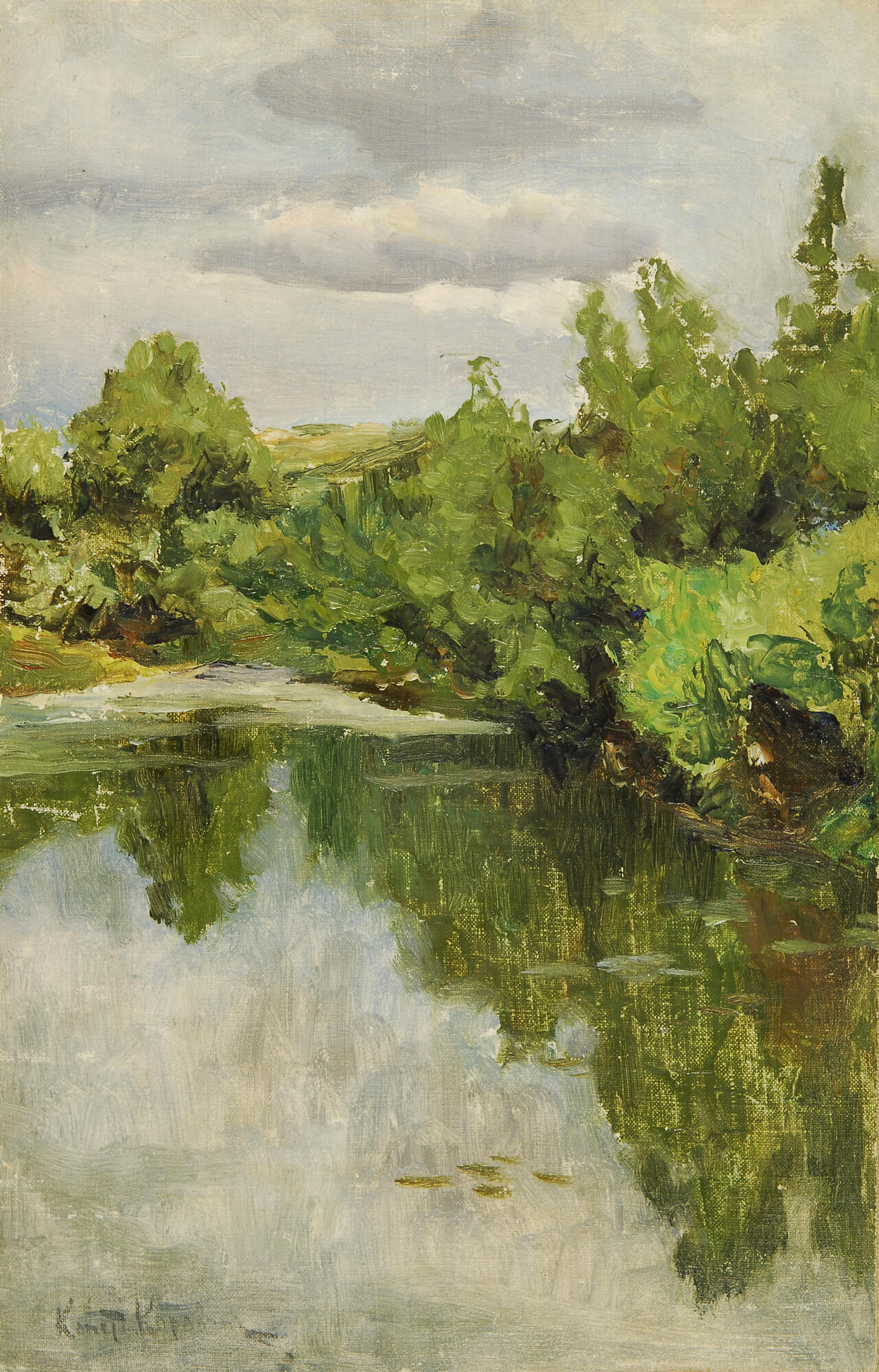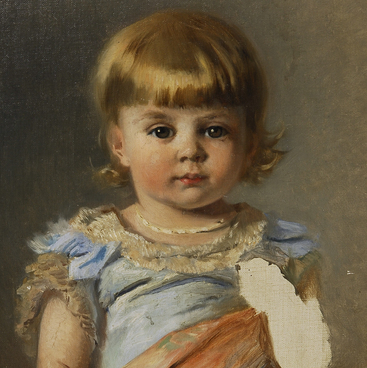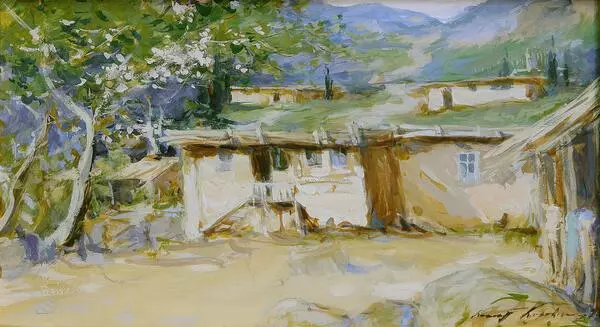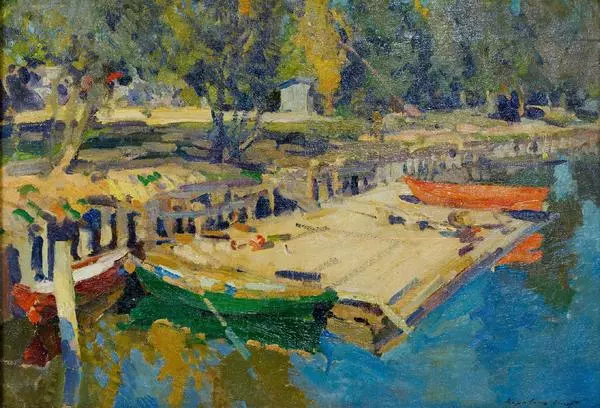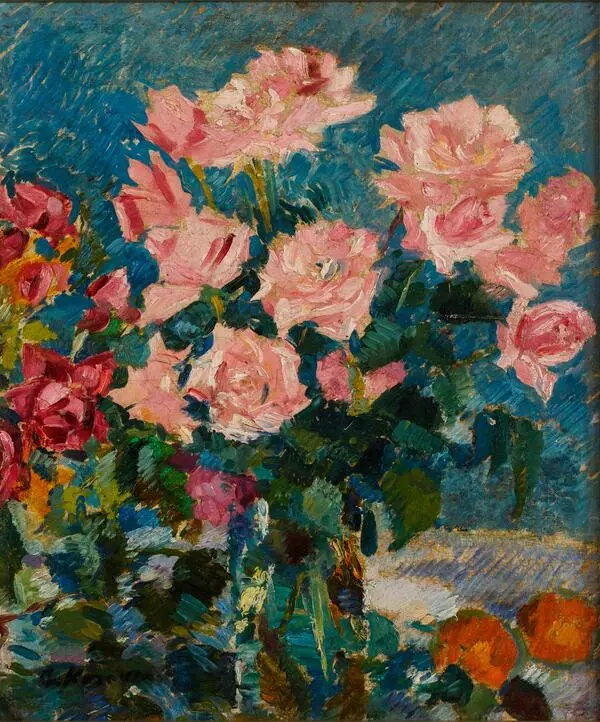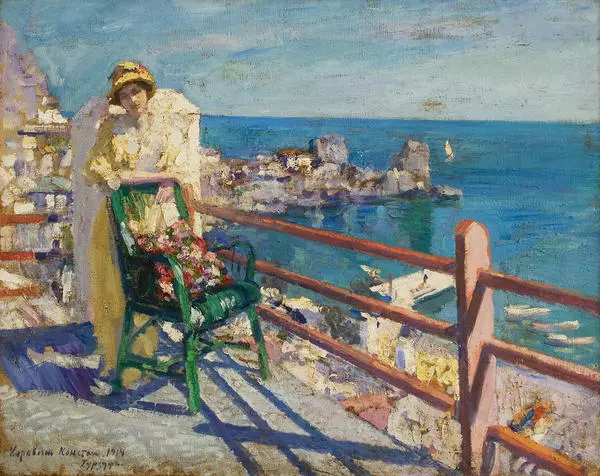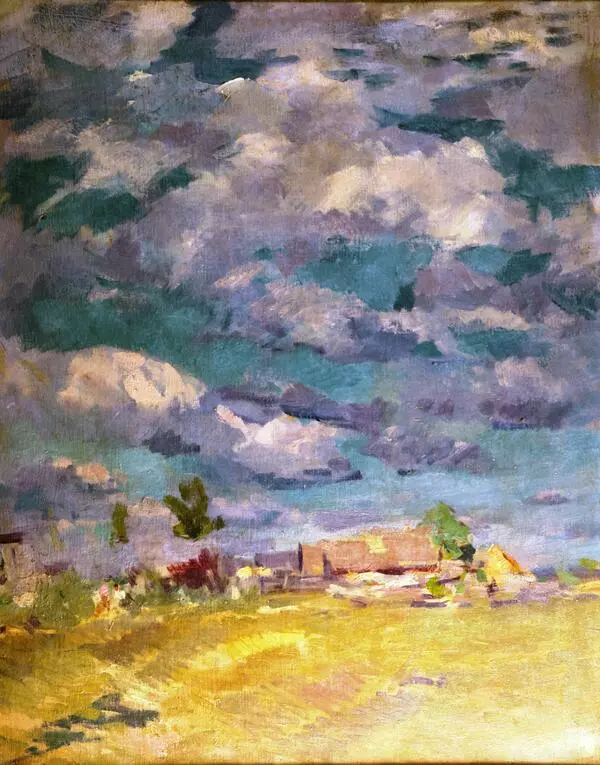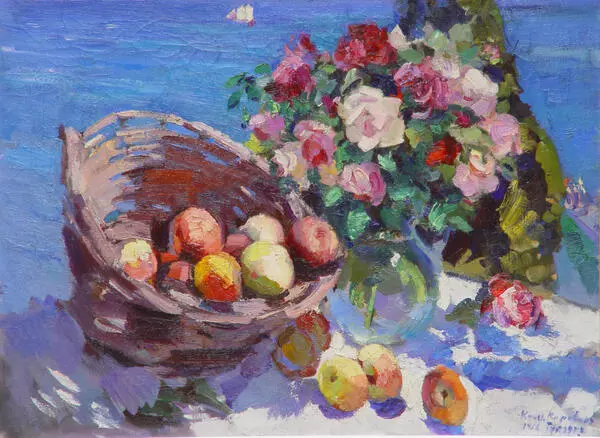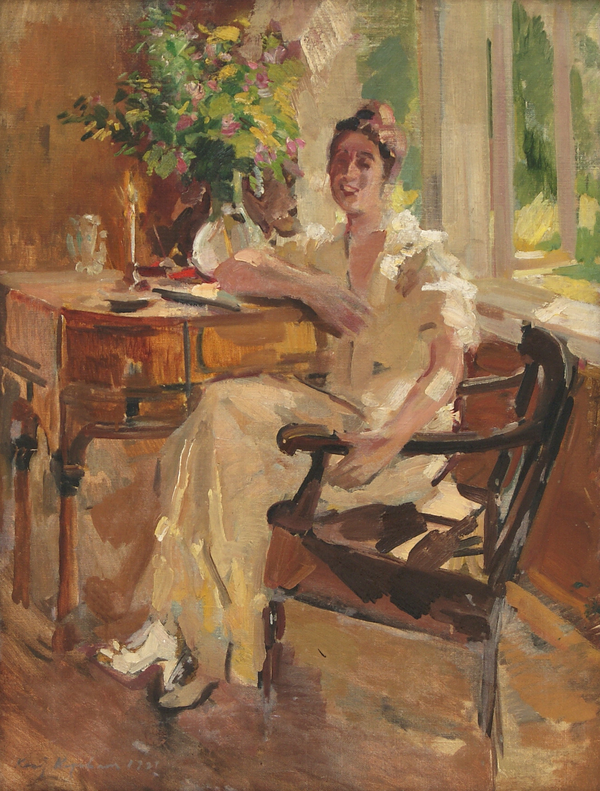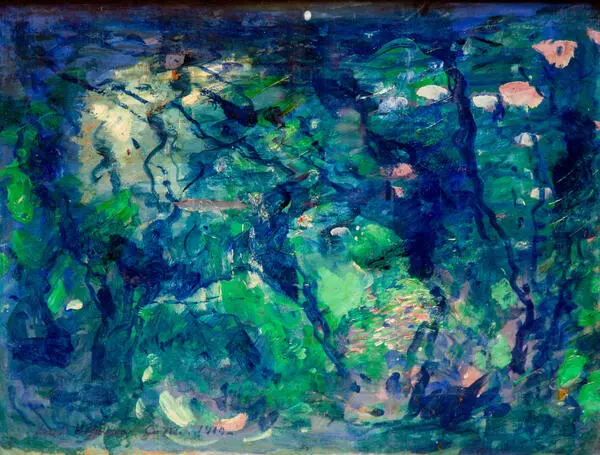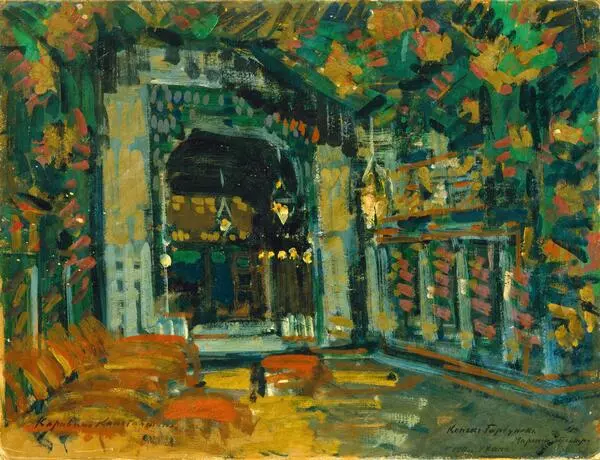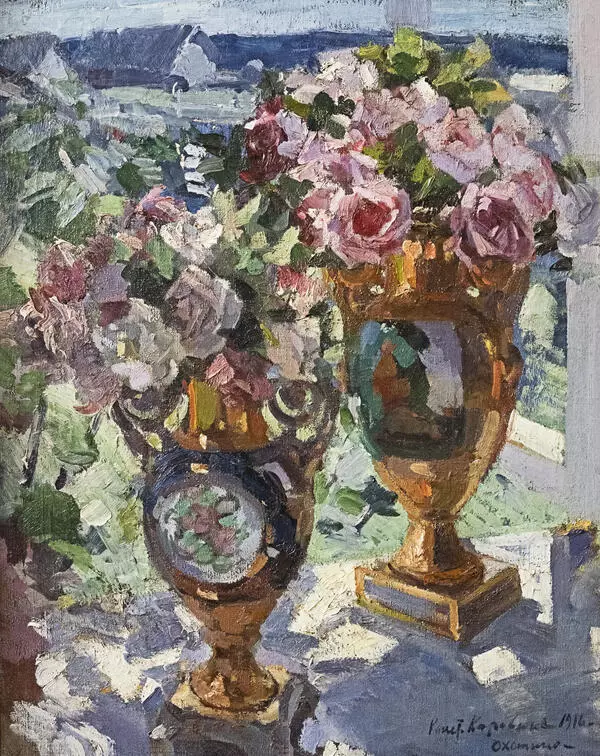Konstantin Korovin painted ‘Landscape #57,’ in the 1910s. He portrayed a view of a small lake, surrounded by dense thickets. The lush green vegetation was painted using separate, but distinct brush strokes. Its reflection can be seen on the still surface of the lake. This was done by using smoother movements of the brush. The researchers did not specify the exact location where the artist had seen this landscape. From what we know, Konstantin Korovin had not yet emigrated from Russia to France in the 1910s.
Konstantin Korovin was born in Moscow in 1861. The future artist’s father had received a university education, but lacked the business acumen to succeed, and eventually went bankrupt. The family had to move to the village of Bolshiye Mytishchi near Moscow.
The boy liked the village, which is where he began to become aware of nature’s beauty. The mother was busy raising the children of the family. She often painted with watercolors and played the harp. Korovin recalled: ‘I loved looking at the different boxes with colored inks my mother had on the table. Such pretty boxes, and a variety of different colored inks. And she would spread them out onto a plate and then paint pictures in her album: winter or the sea. They were so pretty that I felt I was flying to somewhere in paradise. My father also drew with a pencil. Pretty well, everyone said — both Kamenev and Pryanishnikov. However, I liked the way mother painted more.’
When Konstantin Korovin was a teenager he entered the Moscow School of Painting, Sculpture and Architecture. He transferred from the architectural department to the landscape class under Alexei Savrasov. The famous artist taught Korovin how to convey the spirit of life and nature through his colors. Later, the young artist said that a landscape cannot be painted just because it is beautiful: ‘it must have a story of the human soul.’
After Alexei Savrasov left the school, the young artist worked under Vasily Polenov in his studio. Polenov introduced the students to the art done by Impressionists. In 1883 Korovin was astonished by the new artistic movement and painted ‘a portrait of a chorus girl, ’ which was later renamed ‘the first swallow of Russian impressionism.’
‘Landscape #57,’ gravitates towards Russian impressionism. Russian impressionist painters painted sketch works out in the open in order to capture the movement of light and its refractions. In his refined works of art, Konstantin Korovin aimed to cover the whole concept without having to break it down into parts. He was able to create forms of the objects with two to three casual thick brush strokes. Contemporaries called him, ‘The Mozart of painting, ” for his ability to quickly finish paintings and his bright color combinations.
